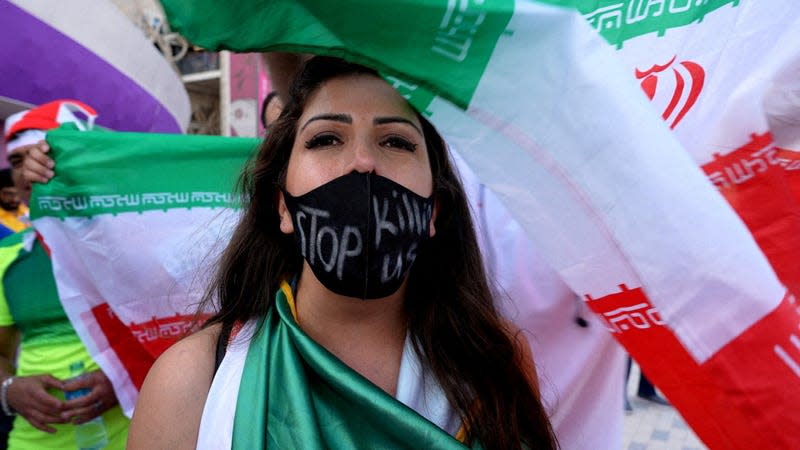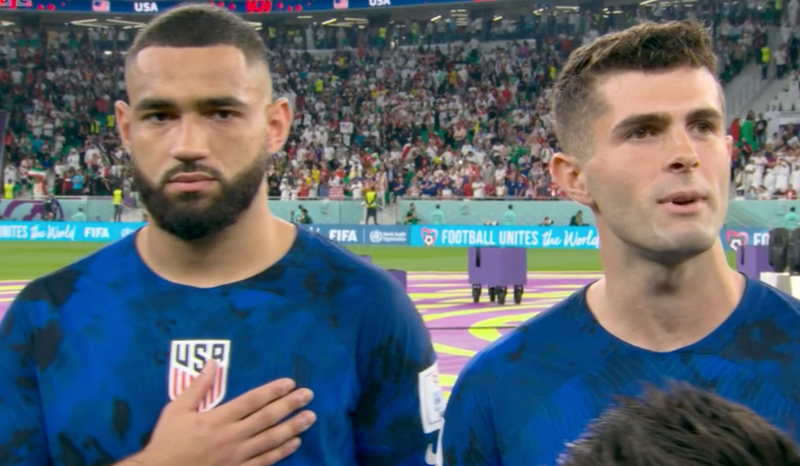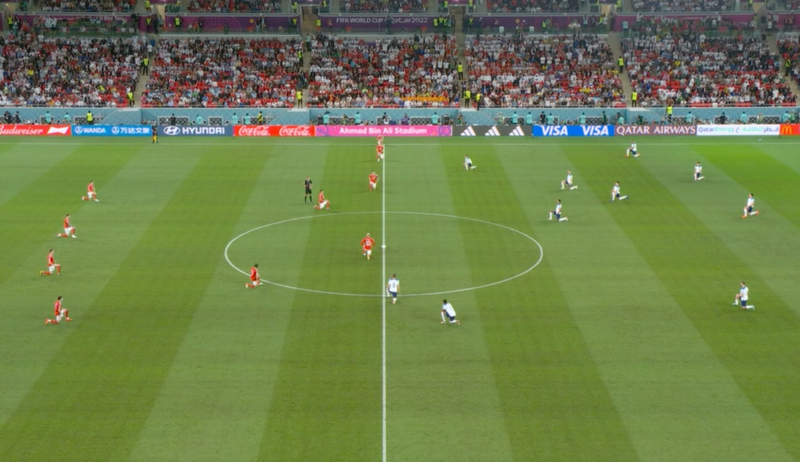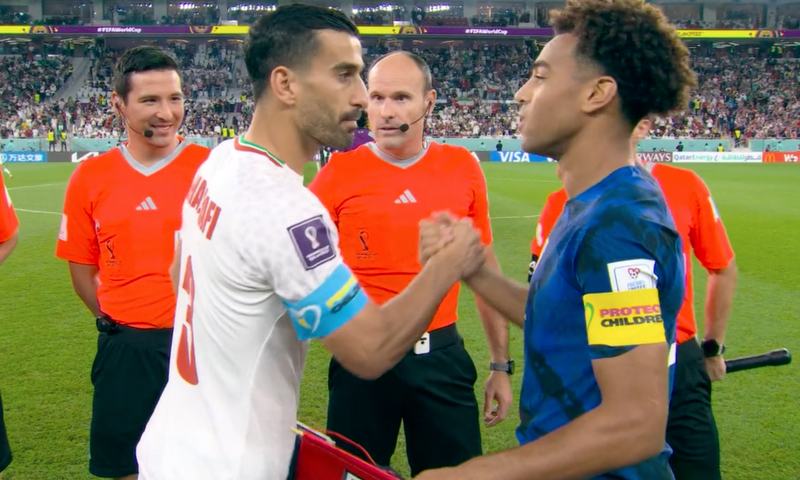Decoding the signs and symbols of the US-Iran World Cup game

- Oops!Something went wrong.Please try again later.
When Iran played the US at the World Cup last night (Nov. 29), there was a lot more going on, both off the pitch and on it, than just football (or soccer, if you’re a US fan).
In the context of the tournament, it was a big game. The US had to win in order to stay in the competition. The last time the teams met in a World Cup was 24 years ago, when Iran won 2-1 in France in 1998. In both games, political tensions between the two countries made the game an early Christmas present for keen semioticians.
Read more
Singing the anthem
The teams lined up for the playing of both countries’ national anthems. But would the Iranian players sing? Months of domestic protest in Iran centering on the rights of women have resulted in the deaths of an estimated 400 people at the hands of security forces since mid-September. Many of the dead are young, some children. Refusing to sing the national anthem thus became a potent form of protest, and the team didn’t sing it before their opening match.
But if squads from all countries are compelled to be the face of national pride, Iran faces particularly keen pressures. After that opening match, the government back home arrested a famous footballer, accusing him of opposing the state. It sent a clear signal, and the players in Qatar duly sang along just before their second game, against Wales. Ahead of the US game, all the Iranian players’ lips moved as the national anthem played, although almost none seemed to be singing enthusiastically.
In the US team, singing styles ranged from heartfelt to non-existent: Defenders Sergiño Dest and Cameron Carter-Vickers did not appear to sing at all.

Cameron Carter-Vickers, left, and Christian Pulistic
Taking the knee
This World Cup has been dogged by all kinds of controversy, ranging from the deaths of migrant workers to LGBTQI+ rights in Qatar, the host country, where homosexuality is illegal. Five years ago, American athletes found a silent way to take a stance in the face of controversy, when Colin Kaepernick, the American football star, began to kneel to protest violence against Black people. The act of taking the knee has spread globally and become more diffuse in its meaning; at this tournament and at others, it now signifies a rejection of many kinds of discrimination.
In the match between England and Wales, which took place concurrently with Iran v USA, every player took the knee before kick off. In contrast, all the American and Iranian players stayed on their feet.

The matter of armbands
The armband controversy is one of this particular World Cup’s quirks. Months ago, a group of seven teams, led by the Dutch national side, pledged to wear armbands with rainbow colours and the words “One Love” in support of LGBTQI+ rights. Qatar objected, recently calling the armbands an attack on Muslim values.
Several teams, and especially their captains, continued to plan to wear the armbands until last week, when FIFA said referees would issue immediate yellow cards to any player wearing one. This increases the likelihood of a player being sent off, damaging the team’s chances of winning.
No players have worn the rainbow band since, but in its place, many have worn armbands with a range of anodyne slogans and neutral colours. The Iranian and American captains wore blue and yellow armbands bearing the words “Protect Children,” perhaps one of the least controversial sentiments possible.

Controversial tweets
On Sunday, the US Soccer Federation tweeted an image of the Iranian flag with the central symbol of the Islamic Republic removed. Facing a storm of anger, they quickly deleted the tweet and scrubbed the image, which they said was designed to show solidarity with the women of Iran facing discrimination, from other social media pages.
During and after yesterday’s game, the USSF confined itself to very safe ground: Encouragement of the players and celebration of their win. No Iranian flags were in sight.
Congrats, @USMNT 🇺🇸 https://t.co/WkhtImnEJk
— U.S. Soccer (@ussoccer) November 29, 2022
The result
A single goal from US forward Christian Pulistic, during which he sustained an injury that landed him in hospital, gave the US the game. They go on to face the Netherlands in the final 16 of their group. The Iranians, knocked out of the contest, now face the prospect of returning home to a defensive government and a roiling nation.
More from Quartz
Sign up for Quartz's Newsletter. For the latest news, Facebook, Twitter and Instagram.

